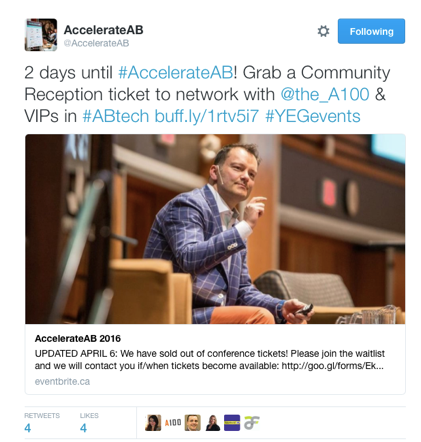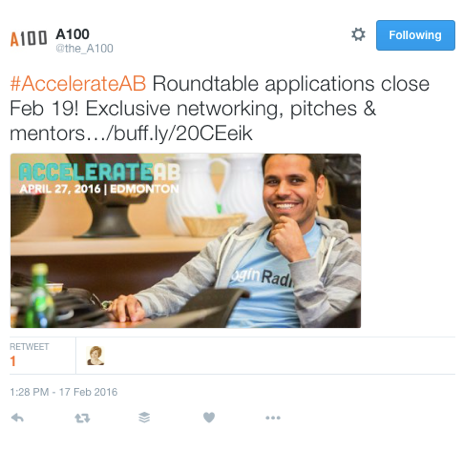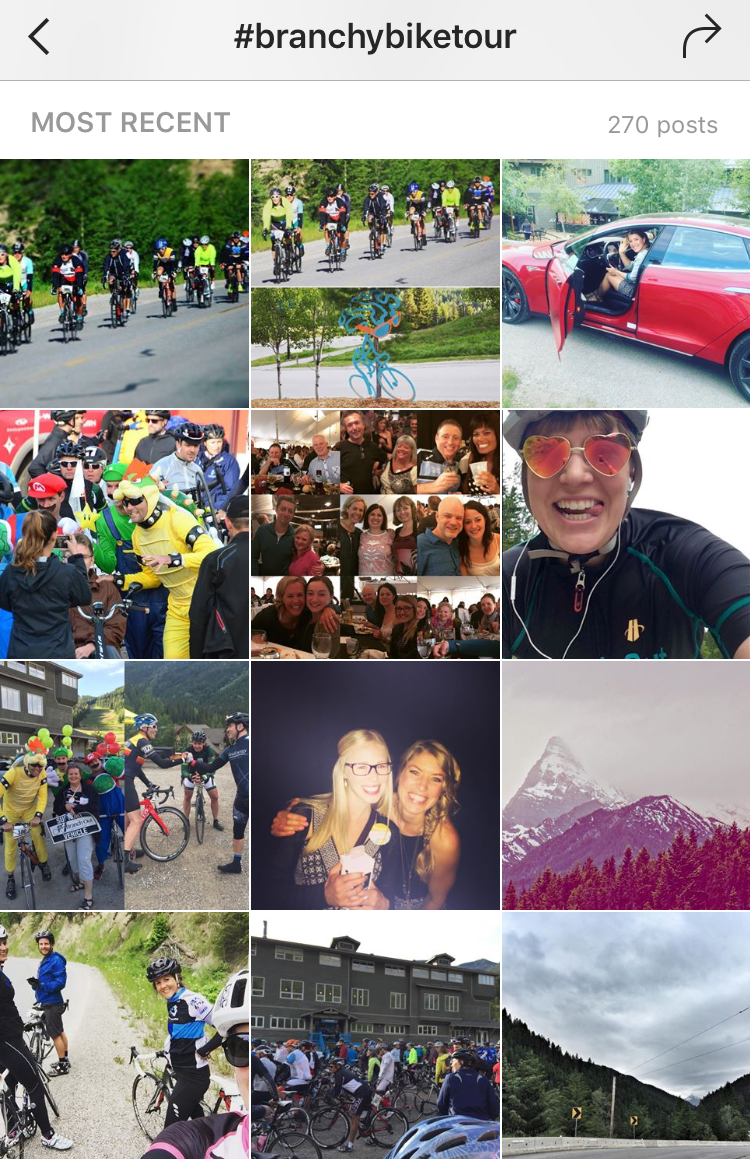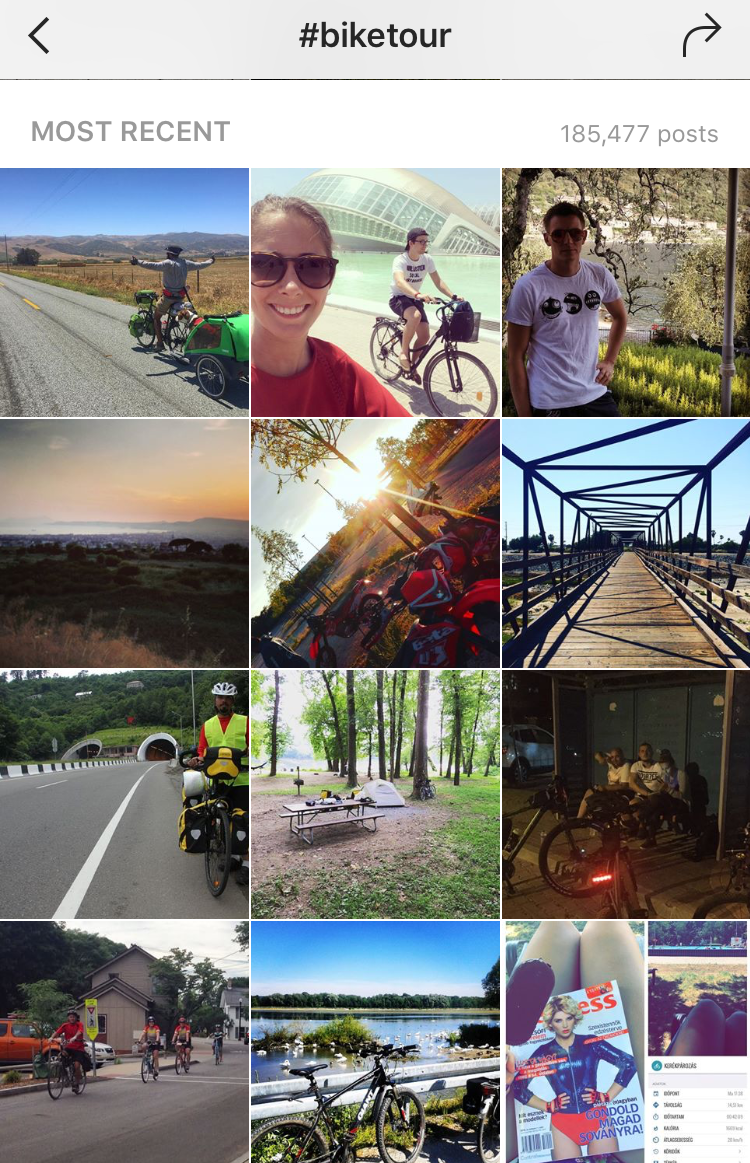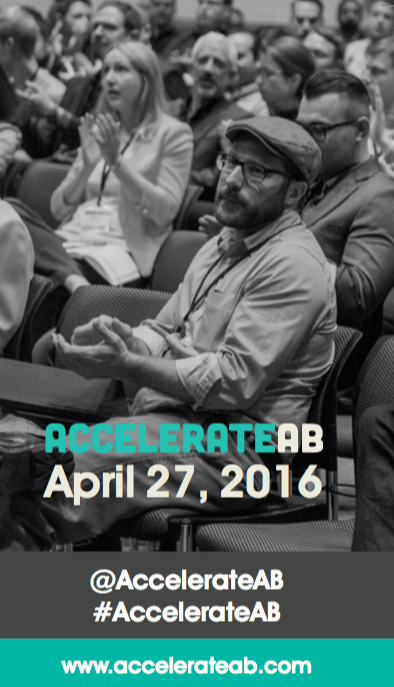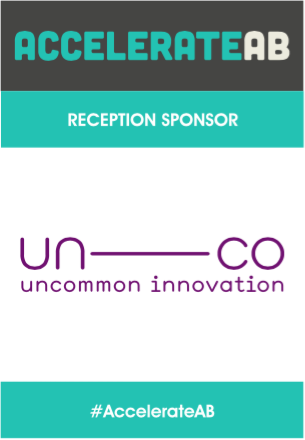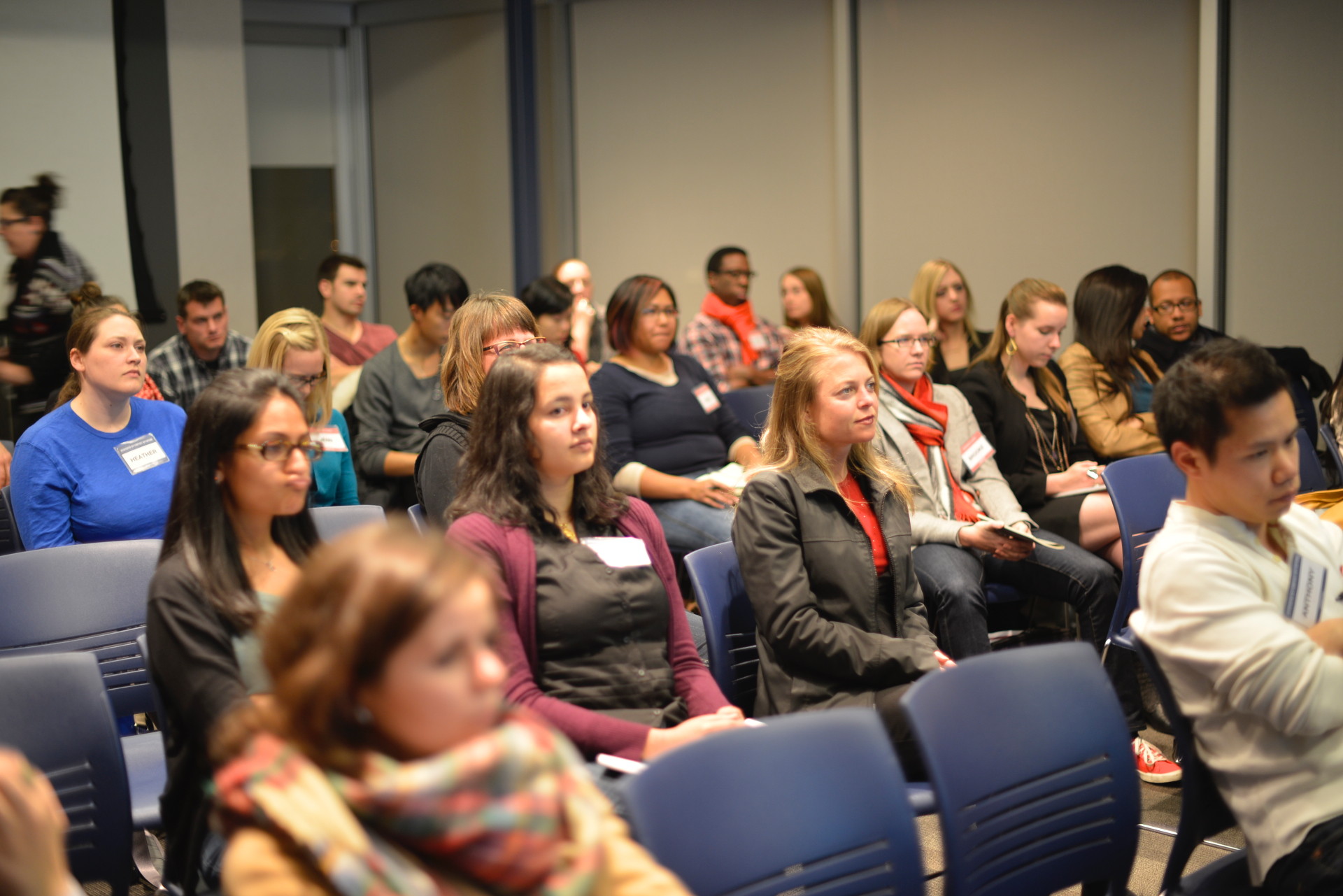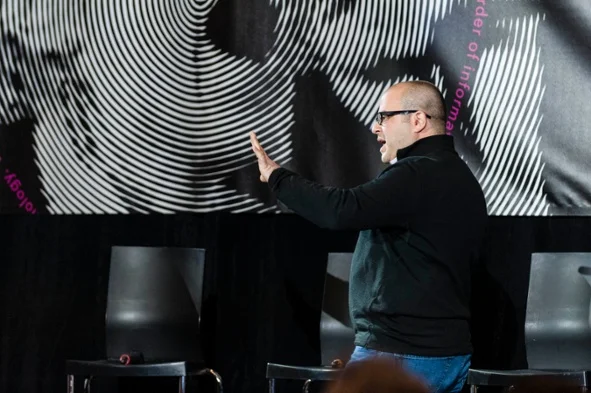Top 10 Tech Tools Event Planners Can’t Ignore
Make some room on your iPads and smartphones, ladies and gentlemen! You’ll want to download these 10 apps and tech tools to help you plan your next event. Oh and the best part? You don’t even have to be a techie to use them!
Make some room on your iPads and smartphones, ladies and gentlemen! You’ll want to download these 10 apps and tech tools to help you plan your next event.
Oh and the best part? You don’t even have to be a techie to use them!
#1 Asana
Asana is the 'organize anything' tool with a simple interface that makes teamwork easy… all for free! Manage multiple projects, to-do lists, assign tasks and due dates to team mates, and discuss ongoing projects with your team. It can be colour coded and you can enable 'celebrations' so there is a brightly coloured unicorn that flies across your screen once you complete a task! We are extremely motivated by this fun feature. Asana is a necessity for the hyper-organized event coordinator and team player.
#2 Squarespace
With Squarespace, you don’t have to be a designer to create a functional and attractive event website. It is an easy-to-learn, user friendly tool that can get your new event webpage up and running within minutes (okay, maybe 15-20 minutes if you’re customizing a template from scratch!) You can also purchase your domain name in this one stop shop. Use the blogging tool to share your content quickly and easily and add all your social handles to attract more followers. At approximately $18USD per year for a website and domain, it’s a great deal!
#3 Eventbrite
Eventbrite delivers one of the best event experiences for BOTH the attendee buying a ticket and the organizer managing registration. Eventbrite has updated and improved its event page design to make it even easier to create an attractive and professional event page. (Only downside is that you can’t easily format your event copy without some HTML and CSS ... But that’s hopefully going to be updated soon.) On the back end, you can create promo codes to share with VIPs, offer multiple ticket types, download attendee stats, and more! Use the mobile app on the day of the event to check-in attendees and track how many have arrived.
#4 Google Drive
What would we do without Google Drive? Google Docs and Sheets (Google’s version of Microsoft Excel) allow us to access planning documents anytime, anywhere. It makes collaboration easy by allowing multiple people to work simultaneously. Create and distribute feedback surveys or application forms using Google Forms. Submitted form data is sent directly to your Google account and it even puts it into a beautiful report format for you to read. No more annoying attachments or creating charts from scratch!
#5 Canva
Canva is a free, online design tool that we use to create custom content. From social media images, to posters, to event programs, Canva lets you step into a designer’s shoes quickly and easily without the complicated software. Want to be a considered a live tweeting genius? Download the iPhone app, take a photo, add your logo and publish branded images and content to share live during your event!
#6 Mailchimp
Mailchimp helps you to build and manage your email lists for free, up to 2,000 subscribers. Tracking opens and clicks can prepare you for how informed your attendees will be and can help you know when to change up your email strategy. Mailchimp ranks your most successful campaigns so you can see what works and what doesn’t! You can also personalize emails and subject lines to make your emails as friendly as possible.
#7 Streak for Gmail
Want to make your emails even more personalized? Dodge the spam folder with Streak, an app for Gmail users that lets you use personalized mail merge tags and send emails 1:1 instead of having to ‘bcc’ groups. This is a great way to email a group of speakers or sponsors. Expect an increase in responses!
" Streak has saved me hours of emailing and has increased response rates tenfold!" - one of our clients and a brand new Streak user
#8 Buffer
Buffer is your ultimate time saving tool that keeps your Twitter, Facebook and Instagram profiles filled with content. Don’t have time to post ad hoc? Schedule a week or more worth of posts on Buffer to save yourself some stress! Step it up a notch and download the Buffer add-on for Chrome to easily schedule retweets when you’re browsing the Internet. The analytics feature also tracks your top tweets.
#9 Spotify
Spotify gives you access to tons of readymade playlists! Don’t waste time worrying about your event tunes. Pick a playlist based on the mood you want to create for your event. Just be mindful that ads will play if you are using the free version so you’ll want to upgrade to the premium account for about ~$9CAD per month.
#10 Square
Square is a mobile payment processing and online invoicing tool. Using the square card reader, you can take credit card payments onsite and issue receipts for all purchases (including cash). Why limit ticket sales at the door or fundraising efforts? If your attendees prefer to be invoiced, you can do so (and collect payment) through Square. Events are about flexibility!
These are the tools we use to plan conferences and special events. What tools do you use?
Social Media Tips to Help You Promote Your Next Event
Social media is a powerful tool for engaging your audience and teaching them why they should attend your next event. In our first contribution to the Event Planning Toolkit, we cover three social media marketing strategies to help you get the right people in the room and to create buzz for events.
Social media is a powerful tool that not only lets you talk to your audience directly, but also lets you promote your next event. In this first blog post for our Event Planning Toolkit, we cover three social media marketing tips to help you get the right people in the room and create buzz for your events.
1. Create social media accounts for large events
Social media isn’t just intended for organizations. Your event deserves a voice too! Creating separate social media accounts for large events, such as conferences, will help you engage attendees and build a community year after year. It also makes it easier to build buzz and leverage past attendees to spread the word! They can also ask questions, reach out to others and set up meetings, and get a feel for the types of other attendees who will be “in the room”, so to speak.
The A100 organizes an annual conference called AccelerateAB. Both the organization and the event have social media accounts and they leverage one another to promote the event.
2. Create unique and memorable event hashtags
Event hashtags make it easy for social media users to follow conversations about your event. It’s important to make your hashtag unique, memorable and as short as possible (every character counts!)
Branch Out Neurological Foundation used #BranchyBikeTour rather than just #BikeTour so that its conversations didn’t get lost amongst the hundreds of other bike tours taking place around the same time.
Ensure your hashtag is listed on all of your event communications and marketing materials. This includes directional signage, attendee programs and table signage, to name a few.
Extra Tip: When attendees purchase tickets, encourage them to tell others and make it even easier by giving them a scripted post with the hashtag. For example:
Just purchased my ticket to #AccelerateAB! Looking forward to spending the day with the Alberta tech community on April 27 in Edmonton!
3. Use Click-to-Tweet to make it easy for others to promote your event
Want to make it even easier for busy people to start talking and tweeting about your event? Create easy-to-use Click-to-Tweets. Click-to-Tweet is a free tool that enables people to instantly publish your pre-scripted tweet with the push of a button. Here’s an example:
To create your own Click-to-Tweets:
- Go to Click-to-Tweet.com and “Sign in with Twitter”
- Write your tweet into the white message box and click “Generate New Link”. You will be provided with a shortened URL.
- You can either share this URL or hyperlink the tweet into an email or document so the reader can see the content before clicking
- Once the hyperlinked tweet is clicked, it will go directly to the individual's Twitter account
- At this point, they can either instantly post the pre-scripted content, or customize it before sharing
Now you are ready to get social!
Just remember, events are intended to be community builders. Engage your community online and prepare for your community to naturally expand as people start conversations about your event. Talk about building buzz!
Good luck!
-Team Catalystica
Tapping into Calgary's Tech Community
Want to tap into Calgary's tech community? Find out what YYC has to offer for the technically inclined. Check out some great organizations in Calgary and see which suit you best.
For the past few months, I've been working with Lighthouse Labs to launch their first full-time web bootcamp in Calgary. Here's a shortened version of the blog I wrote to share what #YYC has to offer for the technically inclined!
Want to Connect with Calgary's Tech Community?
Chic Geek - a non-profit organization dedicated to encouraging women to be makers, builders and creators leveraging technology to explore entrepreneurship. They host a Mentorship program as well as beginner-friendly workshops to get women (and men) up to speed on tech tools and to build confidence.
Startup Calgary - a nonprofit organization dedicated to entrepreneurs and technology-focused startups. They host a number of events throughout the year, with the largest being Launch Party, a 500-person event that brings the entire innovation community together to celebrate entrepreneurship in Calgary and recognize the top 10 startups.
Pixels & Pints - a monthly Meetup lead by Tony Grimes that is ideal for designers and developers. The format is extremely simple: Bring people together once a month and drink beer. There is an opportunity to do a ‘call out’ that you’re looking to hire, seeking work, or just announcing an upcoming event that is relevant for developers and designers.
YYCjs - a monthly Meetup lead by Eric Kryski for JavaScript developers. The Meetup has grown rapidly over the past 5 years. So much so, that they needed to change up the venue to the Last Best Brewery so they could accommodate at least 65 people each month.
Assembly Coworking Space - an affordable coworking space in Kensington targeted at tech startups and social enterprises. They offer a complimentary community space on the fourth floor for Meetups and are instrumental in bringing people together. Plus, they're hosting the first Lighthouse Labs Calgary Bootcamp cohort!
The A100 - spanning Calgary (and Edmonton), the A100 is a group of seasoned technology executives in Alberta. Their members regularly help others expand networks, connect people experiences, and share their experiences in order to help the next generation of entrepreneurs in Alberta. I'm currently helping them plan AccelerateAB, Alberta's large tech conference taking place in Edmonton on April 27, 2016.
Innovate Calgary - an innovation and commercialization hub for technology companies. They offer a number of programs for entrepreneurs and host the New Tech Meetup to highlight a couple local tech startups every month.
Digital Alberta - the voice of the digital industry in Alberta. They connect people through a membership network and host an annual Gala to highlight the best of the digital sector in our province.
This list is by no means exhaustive, but was created to highlight the many awesome organizations and community groups thriving in Calgary.
Want to learn more about Calgary's tech community? Send me a note and let's grab coffee.
Why Events Should Be a Part of Your Marketing Strategy
Looking to connect with your audience? Host an event. Face to face events are all about making connections. Here are five benefits of hosting face to face events and why they still matter.
Originally posted on Picatic's Event Planning Blog on Sept 10, 2015
Looking to connect with your audience? Host an event.
Face to face events are all about making connections. Even though you can easily ‘connect’ with people online using social media, there is still something magical and unique about face to face interaction that you just can’t get behind a screen.
Here are five benefits of hosting face to face events and why they still matter:
Events build relationships
We’re human. We like to engage with other humans: shake other people’s hands, smile at one another and share jokes or use sarcasm to build rapport. At events, you can pick up on mannerisms and read others’ nonverbal body language, ultimately enabling you to build long-term relationships.
Social Media Breakfast YYC (SMBYYC) is a great example of a monthly networking event that builds strong relationships. This event brings online social media enthusiasts together so they can connect face to face (while tweeting of course!)
Events raise awareness and increase loyalty
Events give potential customers an opportunity to discover, compare, or try a brand before they purchase.
When engaged in one-on-one dialogue at an event, you have someone’s undivided attention. You can share your story in an authentic way and ultimately build loyalty, which is every marketers ultimate goal.
The Chic Geek hosts a Geeky Gathering (previously Speak Geek) event to discuss mentorship, goal setting and confidence building with its community members before launching applications for its 6-month Mentorship Program. This is a great event designed to help people determine whether they want to commit to the program.
Events create memories
Experiences that excite our senses – smell, sound, sight – help us form memories. This is all thanks to the little part in our brain called the hippocampus, which is “crucial for creating new memories for events.” (BBC)
Savoury food, delicious drinks, upbeat music, ambient lighting are all event elements that stimulate the senses and help you position your brand without even saying a word.
The adrenaline rush of Startup Weekend is an excellent example of a hackathon that stimulates the senses and creates life-long memories for participants.
Events stimulate word of mouth
Positive word of mouth is one of the most valuable forms of marketing. Period.
People want to be in the know and share cool experiences with their friends. Events enable you to invite others, share valuable info and relive the experience long after the event ends.
Traction Conf was a conference that brought the entire Vancouver startup community together. Everyone in tech was talking about the event – so much so, that it sold out 45 days early.
Events help you position your brand
Events are an excellent way to establish your brand in the marketplace. Whether it’s speaking at an event or just explaining to someone what your company does – it’s a live, authentic demonstration of your expertise.
In conclusion, face to face events help you build meaningful connections with your target audience. They help you create loyal advocates – which is the ultimate goal of any and every marketing campaign.
Visit the Picatic blog for additional event planning and event marketing tips.
Cut Through the Clutter with Experiential Marketing
Learn how to cut through advertising clutter using experiential marketing activities.
What is experiential marketing?
Experiential marketing is a form of advertising in which your consumer gets to experience your brand through their senses - taste, touch, sight, sound, and smell.
Experiential marketing isn’t a new concept or marketing buzzword; The term “experiential” was first coined by Alvin Toffler in his 1971 book “Future Shock” and expanded upon 30 years later by Joseph Pine and James Gilmore in “The Experience Economy.” Think about the last time you visited Costco and sampled that brand new popcorn mix. Or that time you attended an informative lunch & learn sponsored by ATB Financial. Or when you personalized your can of Coca Cola at Stampede.
As you can imagine, there are many creative ways to engage your consumers or clients at an experiential level.
But why does experiential marketing matter?
Two words: Advertising clutter.
Today, we are inundated with thousands of marketing messages each day. “We've gone from being exposed to about 500 ads a day back in the 1970's to as many as 5,000 a day today,” according to Jay Walker-Smith, President of marketing firm Yankelovich.
Strategic experiential marketing activities can help you cut through the advertising clutter. It can help your organization:
- Generate leads
- Strengthen relationships with existing clients or consumers
- Educate your consumers
- Position yourself as a thought leader
- Increase brand awareness
- Create lasting, memorable impressions
Experiential marketing for B2B
Experiential marketing can also be applied for business-to-business (B2B) companies. Here are some ideas:
Host an informative lunch and learn for your clients on a problem they currently face
Create a contest that gives your community members an opportunity submit an idea and organize an event to announce the winner
Attend a conference or community event and have your colleagues hand out samples or discount cards in exchange for a photo or social media mention
Organize a fundraiser and support an important cause while bringing your clients, colleagues and community members together
Implementing a successful experiential marketing campaign
The key to developing a successful experiential marketing campaign is to ensure you understand your target audience’s behaviours, hobbies, and needs.
For example, if you were interested in hiring software developers, you wouldn’t throw a huge office party with loud music, fancy food and a black tie dress code. (Well, you could always try). Instead, we recommend getting to know your existing software developers. Where do they hang out? What do they like to do? What kinds of events or Meetups do they attend?
Research their needs and then create an event or experience that they would be drawn to so you can remove as many barriers to engagement as possible.
Do you have examples of successful experiential marketing campaigns that you’ve implemented or taken part in? Share them below!
The Story Behind the Name
The story behind our company name and why we focus on experiential marketing.
Welcome to the world, Catalystica! This is the beginning of something new and as the founding Principal, I'm excited to share it with you.
What's Catalystica?
Catalystica focuses on community engagement through experiential marketing. For folks unfamiliar with the term, it basically means that we specialize in creating events such as conferences, tradeshows, and meetups, on behalf of companies so that they can connect with their stakeholders face-to-face.
We're brand-first marketers + event strategists + community connectors who are passionate about bringing brands to life to meet their business objectives. Our work is grounded in the small details that make the biggest difference.
What’s the story behind the name Catalystica?
Sure, the name is long and you’re probably considering the various ways to pronounce it. (It’s /'kaet-e-list-ih-kah/.) But, it’s based on one of my favourite words: catalyst.
“A catalyst (/ˈkætəlɪst/) is a person or thing that causes a change.”
At Catalystica, we believe all human experiences have the potential to be catalysts for change. Experiences connect people, trigger conversations, inspire novel ideas, and create deeper and more meaningful connections than online interactions are capable of.
The Meaning Within Our Logo
Why is our logo comprised of three triangles? The triangle represents the uppercase delta letter that means 'change.' There are three corners and three sides on every triangle. Three is the universal triad for the past, present and the future.
You'll also notice the snow-capped mountain within the triangle. We love mountains (that's where you'll find us in our spare time!) and there are many metaphors used to describe mountains. This is one of our favourites:
“Life is a mountain, and we are all climbing to reach the summit.”
Why focus on experiential marketing?
I’m drawn to people and I love facilitating meaningful social connections among them. The way I see it, the easiest way to connect is for people to get together, in person, and see what happens when conversation sparks and ideas transpire. Experiential marketing provides a space for companies and organizations to interact, share ideas, and expand their network.
Well there you have it; the story behind the intriguing name and why we do what we do.
Questions? Comments? Leave them below or reach out and connect!
Until next time,
Jenn
Hackathons, the Ultimate Experience
Want a creative way to engage entrepreneurial millennials? Host a hackathon. Here are 10 lessons I learned during my first Startup Weekend hackathon in Nov 2013.
Looking for a creative way to engage millennials? Host a hackathon.
Wait, what's a hackathon?
“Hack·a·thon - an event, typically lasting several days, in which a large number of people meet to engage in collaborative computer programming.”
A great example of a hackathon that engages business folks, developers and designers is Startup Weekend. Here are 10 lessons I learned during my first Startup Weekend (which just so happened to be the Women's Edition hosted by Chic Geek) back in November 2013.
10 Lessons Learned from Startup Weekend
Originally written by Jenn Egroff for the Calgary Herald blog on November 12, 2013
For those of you who are unfamiliar, Startup Weekend brings together designers, developers, engineers, business managers, marketing gurus, startup enthusiasts and more to create startups. Anyone is welcome to pitch their startup idea and receive feedback from their peers on Friday evening.
Teams organically form around the top ideas (as determined by popular vote) and then it’s a 54 hour frenzy of business model creation, coding, designing, and market validation. The teams show off their newly launched startups on Sunday evening and the top 3 receive some amazing prizes.
Here are 10 short and sweet lessons I learned over the weekend:
1. Designate a project manager from the get-go and define your methods of communication.
Luckily, we had a project manager who stepped up and started us off. We added everyone to a Google Drive folder and created a comprehensive Google Doc to keep track of everything. We used a communication tool that everyone was familiar with, and could get the job done quick and simple.
2. Work backwards.
30 minutes into our initial discussion, our project manager interrupted our noisy chatter and asked: what’s the end goal? We stopped talking over and around one another and actually listed out our personal goals/expectations as well as went over the judging criteria in as much detail as possible. We created a road map.
3. Divide and conquer.
The first 45 minutes were rough. I honestly thought to myself, “Oh boy. I’ve never lead a team this big. I have no idea what I’m doing.” It was a nightmare trying to collaborate as a team of 9, especially with very different thinking mentalities – engineering, design, development, marketing, and finance backgrounds.
We roughed our way through a hypothesis to the problem and then quickly divided the team based on skill set: Development/design; Business modelling and finance; and Customer validation/marketing.
4. Validate, validate, validate.
All of our features and pricing model were based on market research with our target audience. We knew it would be the key to our success so we focused our attention on it from the start. We created an online survey, approached strangers at a busy location where we knew our target audience would be and intimately interviewed 10 potential customers. It helped us paint a clearer picture of the problem we were trying to solve and how we were going to solve it (and make money doing so!).
5. Check in with your teammates.
Dividing and conquering and having a project manager to keep track of it all is great, but it’s so important to check in with your teammates. I constantly asked if they were still having fun (one of their personal goals for the weekend) and how they were feeling. Sure this is touchy-feely and didn’t contribute to hard development, but it helped us become a unified team.
6. Take advantage of free advice, but be specific in your ask.
We specifically requested 2 marketing coaches who were members of our target audience. We interviewed them and got testimonials, then dove into the business model. The development team requested a great coach near the end of Day 2, who showed them a Wordpress theme that would make development a whole lot easier. It wasn’t that easy to transition to, but it paid off in the end and our developers learned A LOT about customizing Wordpress themes.
7. Show your team you trust them. Don’t micromanage.
I caught myself doing it on the first night. (I literally started typing on someone else’s computer, then shamed myself). Take a leap of faith and let them take a stab at delivering. Then give them your feedback.
8. Laugh. Have fun.
When I walked by some of the groups to grab lunch, they looked so serious. We were a ‘punny’ group, and I highly encouraged any and all silliness. During crunch time, a teammate and I looked at a ‘Makes me Giggle’ Pinterest page for a minute, had a (really) good laugh, and then got back to work.
Shauna Casey, Startup Weekend facilitator from Seattle, (left) and Alice Reimer, CEO of Chaordix (right) discussing the pitches.
9. Be authentic.
Alice Reimer, Co-founder of Evoco, now CEO of Chaordix, gave an inspirational talk on pitching and one of her key points was to be authentic. You could tell she lived and breathed it, and she was truly inspiring. The final pitches that grabbed my attention (and stopped me from glancing at the #swyyc Twitter feed), were the ones where the founder was clearly passionate about the idea and it showed in their eyes.
10. Take care of your body: Hydrate. Eat well. And sleep, somewhat.
Drinking lots of water = lots of bathroom breaks = getting out of your chair for a brief burst of exercise. #Winning.
Don’t just stock up on the sugary treats and salty snacks. Eat lots of fruit, veggies, and get your protein. Thankfully one of our team members brought a 2lb bag of apples everyday. My dentist will be happy with the results.
Sleep is also really important. However, I can’t say I did much of it. I was running on pure adrenaline when I finished my pitch on Sunday evening. Yes, I may have laughed more than usual, but I was ok for the most part.
Startup Weekends or hackathons in general are great ways to build community, learn new skills, and give folks an experience they'll never forget.
Do you have experiences participating in hackathons that you'd like to share? What made them memorable for you?
The Do's and Don'ts of Using Conference Apps
Looking for a conference app? Here are the Do's and Don'ts based on personal experience using Bizzabo for the Cloud Factory conference April 7 & 8, 2014.
Originally written by Jenn Egroff on behalf of the Cloud Factory Conference Organizers for the Bizzabo blog on April 15, 2014.
Jeff Lawson, Twilio CEO speaking at The Cloud Factory
When Boast Capital and the Canadian Cloud Council set out to find a mobile app for The Cloud Factory conference, we were simply looking for an engagement tool. Something that would help our attendees make connections and follow the conference agenda. That’s it. But when we discovered Bizzabo, we soon realized it met all of our needs and more!
The Cloud Factory conference brought together 550 of the brightest executives, entrepreneurs and investors in cloud computing technology on April 7 & 8, 2014. The conference was hosted at the Banff Centre, a beautiful arts and leader innovation campus located on the side of a mountain in the rockies resort town of Banff, Alberta, Canada.
Out of the 550 conference attendees, 350 joined the community and 157 opted to check-in. According to our analytics page, we were impressed to discover that our attendees had exchanged over 1,350 messages to one another and had sent 257 LinkedIn connections. They used the app to keep track of leads (799, to be exact) and viewed others’ pages 2,665 times. We call that success!
Based on our experience, here are our mobile app ‘do’s and don’ts’ for conference organizers:
Conference Apps Do’s:
Beyond the obvious advice to fill in as much information into the app as you possibly can (sessions, speakers, sponsors, etc), here are some additional do’s:
- Update your schedule as it changes (it somehow always does!) - this was very easy on our end and our attendees really appreciated it.
- Take advantage of real-time announcements - this was very helpful for giving directions and reminding attendees to visit our Sponsor Lounge. We scripted everything in advance so we knew how many announcements we needed and how many we would have as backup to announce schedule changes. Preparing crafted messages worked well and didn’t require as much time/effort on the spot! (keep in mind, you can’t schedule messages in the system. You still have to copy and paste the messages and press send).
- Publish signage with URLs, QR codes and be sure to tweet the mobile app download link - this may seem excessive, but everyone accesses this information differently and its better to over-communicate this info to encourage engagement.
- Use interactive polls - we used this new feature to help us judge our Cloud Startup Showdown pitch competition. 175 audience members participated and counted for 50% of the final award (alongside our VCs input, of course)
Conference App Don’ts:
- This is a bold statement, but there is no need for paper schedules - we decided to save paper (and time) and rely on our Bizzabo app. Our program changed daily (don’t you love it when speakers cancel last minute?) and we could easily communicate those updates on our mobile agenda and website. Some attendees still prefer paper and will ask for it, but its time to change past behaviours and move to the cloud. (They throw out the paper agenda after anyway!)
- Forget to sync the website and mobile app - we fell into this trap. When there were last minute changes, we forgot to update both our mobile app and the website simultaneously. Not everyone will use the app (unfortunately), so make sure you still update your website too.
- Forget to announce your custom community code- we decided to keep our community private to attendees only and sometimes the attendees would register for the app with a different email address than they had registered for the conference with. Since this information wasn’t always consistent, its best to remind them about the special code so that they will always be able to access the app.
- Assume people will download the app when they register for the conference - most people didn’t download or join our community until a day before the conference (we understand that they are very busy folks!). Make sure you have lots of on-site promotional material so that your attendees can easily download the app and join the community on the spot.
If you have any other do’s and don’ts that you’d like to add, please share them with us below.



